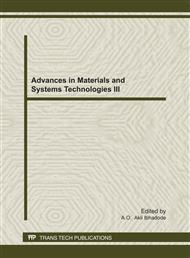p.367
p.375
p.385
p.393
p.403
p.413
p.421
p.431
p.439
Optimisation of Steam Assisted Gravity Drainage [SAGD] for Improved Recovery from Unconsolidated Heavy Oil Reservoirs
Abstract:
Most of the heavy oil resources in the world are in sandstone reservoir rocks, the majority of which are unconsolidated sands which presents unique challenges for effective sand management. Because they are viscous and have less mobility, then appropriate recovery mechanisms that lower the viscosity to the point where it can readily flow into the wellbore and to the surface are required. There are many cold and thermal recovery methods assisted by gravity drainage being employed by the oil industry. These are customised for specific reservoir characteristics with associated sand production and management problems. Steam Assisted Gravity Drainage (SAGD) based on horizontal wells and gravity drainage, is becoming very popular in the heavy oil industry as a thermal viscosity reduction technique. SAGD has the potential to generate a heavy oil recovery factor of up to 65% but there are challenges to ‘’realising the limit’’. The process requires elaborate planning and is influenced by a combination of factors. This paper presents unique models being developed to address the issue of multiphase steam-condensed water-heavy oil modelling. It addresses the effects of transient issues such as the changing pore size distribution due to compaction on the bulk and shear viscosities of the non-Newtonian heavy oil and the impact on the reservoir productivity, thermal capacity of the heavy oil, toe-to-heel steam injection rate and quality for horizontal well applications. Specific case studies are presented to illustrate how the models can be used for detailed risk assessment for SAGD design and real-time process optimisation necessary to maximise production at minimum drawdown. Nomenclature
Info:
Periodical:
Pages:
403-412
Citation:
Online since:
October 2011
Authors:
Price:
Сopyright:
© 2012 Trans Tech Publications Ltd. All Rights Reserved
Share:
Citation:


